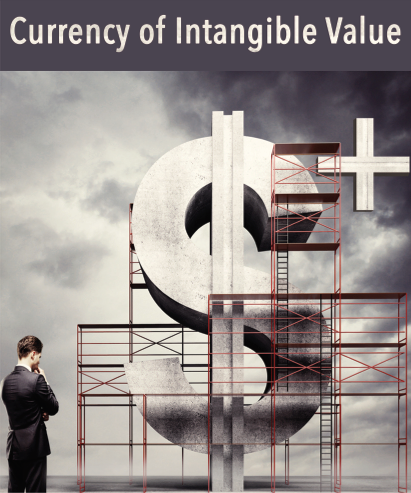By:Tamanna Khosla* PhD and Olinga Taeed** PhD FIoD * The Prajna Initiative ** Centre for Citizenship, Enterprise and Governance
The growth and expansion of global civil society naturally also evolves the metrics that represent our sentiment; the latter is the corollary of the former, however with a latency of around two decades. The 1990s, for example, seemed closely associated with a major shift in cultural and social values that took hold in most developed market economies back in the 1970s. This shift saw a change in emphasis from material security to concerns about democracy, participation and meaning, and involved, among others, a formation towards cosmopolitan values such as tolerance and respect for human rights. These values facilitated the cross-national spread of social movements around common issues that escaped conventional party politics, particularly in Europe and Latin America, and led to a broad-based mobilization in social movements, with the women’s, peace, democracy and environmental movements the best examples of an increasingly international ‘movement industry’. It is during this generation we saw the rise of sentiment analysis which led to the success of unicorns of Facebook, Google and Amazon.
Today’s generation are, of course, the children of the internet, the mobile phone and cheap air travel – the globalization Generation. Similarly we saw the rise of a new set of simpler metrics to represent that consumption obsessed generation – likes and 5-star ratings. Due to social media these have moved from historical retrospective ratings to live metrics which provide directional trend evidence to the immediate future. Nevertheless, they still assume a ratings towards an agreed set of values, which is essentially the basis of global governance as a purposeful order that emerges from institutions, processes, norms, formal agreements, and informal mechanisms that regulate action for a common good. In the absence of a “common good”, single authoritative institution or world government structure, global governance is comprised of elements and methods from both the public and private sectors. These basic elements include agreed upon standards, evolving norms based on shared values, and directives issued and enforced by states. Unfortunately, however, there are no longer agreed shared sets of values so how can metrics evolve in an omnidirectional society?
The concept of global governance raises two sets of, as yet, unresolved issues. One has to do with claims of the legitimate exercise of authority, the other with democratic values. In contrast to theories of governance at local and national levels, a social contract between citizens and institutions of global governance has not been developed sufficiently to constitute a sufficient basis for legitimacy. In its current conception, global governance implies democratic governance. However, the reliance on scientific and professional bodies to set standards, rules, and procedures, on bureaucratic agencies of the state to implement policies, and on voluntary organizations to monitor compliance, none of which are based on democratic principles of representation or equal participation, raises questions about the compatibility of democratic values and the concept of global governance.
The meaning of democracy is no longer within a narrow political environment, but democracy has also enabled the ability to develop communities of differing attitudes, not only liberal citizenry especially minorities of all kind, but also extremity of views. This has proven a challenging time for metrics development as they have to capture vast diverging view points – all equally germane and ‘right’, as truth and opinion are indistinguishable and can be found everywhere. Some metrics that attempt to navigate this difficult path are:
- Trust Systems [2002]
Now in operation for over 20 years the Net Promoter Score®, the grandfather of non-financial metrics, originated out of Harvard but husbanded then promoted by Bain & Co, NPS® has become the de-facto standard of corporate ratings primarily in marketing and customer engagement. In essence, following 5 years of data correlation, NPS showed a linkage between successful organisations and b2c customer referral (represented as an NPS integer), allowing the NPS score to be tracked and targeted.

- Universal Theorems [2011]
Of the 3000 impact and ESG metrics in operation, the Social Earnings Ratio® is the only universal theorem providing a financial value of organisations, products, projects, processes and even people. Over a decade use by governments worldwide, in 2015 the Vatican Press designated it the “The God Metric … the fastest adopted social impact metric in the world”. The data tech algorithm gives value from personal to global value and thus can manipulate value within a traditional mathematical ecosystem. Thought Value of the mind, or ‘Thoughtware’, drives these value sets from micro to macro level but S/E Ratio® does not attempt to calculate the value of our thoughts but rather the outcomes.
- Swarm Intelligence [2019]
Swarm behaviour claims to replicate the decentralized behaviour found in nature. Taking advantage, Unanimous AI provides a “human swarming” platform that allows distributed groups of users to collectively predict answers to questions. It does not represent individual values but a collective status. This process has resulted in successful predictions of major events such as the Kentucky Derby, the Oscars, the Stanley Cup, Presidential Elections, and the World Series. In 2020, the firm published an accurate forecast for the 2020 United States presidential election.
- Thoughtware [2020]
The challenge has always been not the last mile but the last inch – the value of the thoughts in our minds. A recent novel trend uses colour and symbols within a philosophical and psychological (but not scientific) framework. Opensource Physix uses a 2 slider approach to represent opinion and truth that it claims will resonate with users due to its simplicity. Yet to be tested or proven, it may represent a new set of metrics that enable individual viewpoints to be represented irrespective of a swarm or theoretical setting making it essentially a simple, efficient and attractive front end capture mechanism of viewpoint.
Whether comparator of values (NPS®), balance sheet of values (S/E Ratio®), dynamic movement of values (UI) or a visual snapshot of values in our thoughts (Physix), they all represent aspects of truth which can be embraced. None of them are complete in their story telling but perhaps combined they represent a direction of travel for the industry. Whilst no doubt values are multidimensional, an enhanced values metric should be at a minimum 3D with the most user friendly interface capturing our thoughts, utilised in a balance set that can accommodate dynamic movement, and result in a single number that captures the moment which has institutional mainstream meaning as a social driver. When set within a framework, a mathematical model it can be used to overlay on to existing paradigms of society and behavioural modelling from individuals through to representations of society as a whole.
There is a great deal of synergy within a General Systems Theory approach to values. GST purports to explore how all systems behave, and instruments within it like Catastrophe Theory explain how sudden changes behave. Indeed, Chaos Theory which gave birth to the latter suggests that you can never mimic natural systems through a piecemeal empirical dissection of the system but rather to view the system as a whole with inputs, outputs, and chaotic behaviour in between. You can never prove values but rather capture them. Utilizing all our 4 approaches to values ratings within a Chaos system would look like this:
It is important to note that mathematics is not a distinguisher of the merit of a value – it will treat on equal terms Trump supporters .v. Democratic supporters, pro Russia .v. Ukraine freedom, ISIS .v. West. It merely can agnostically represent and model values identifying key KPI’s that change those values with no reference to an agreed ‘standard’ or perspective, no United Nations of values, – a truly decentralization of values. There are 8 billion people in the world, and thus the same number of sets of values with merit in all of them; an amalgamation of these values has no meaning as there will never be consensus against 8 billion viewpoints. What this allows to do for democracy is to respect each individual value set or pathway without forcing an unrealistic blending of these values.
In our current global crisis, the war between Russia and Ukraine represents two distinct sets of values. Under the Total Value theorem:
Total Value = Financial Value + Non-Financial Value
It would be normal and acceptable to exchange financial value for non-financial value, or material investment into Ukraine for adoption of Russian values (what is often called Debt Diplomacy eg. China’s One Belt One Road initiatives). What is not acceptable, and has led to catastrophic war, is expect a change in a nation’s sentiment for no exchange of tangible value to that country. This is a break in natural law and will always lead to conflict.
So values ratings and metrics are not simply a utility for understanding retail and consumerism, but has applications way beyond those narrow confines including the key to bringing peace to our world.













